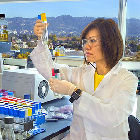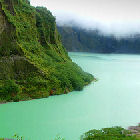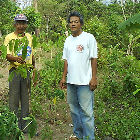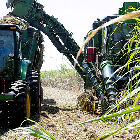By Yojana Sharma, from SciDevNet

27 April 2012 | EN — Debate about the governance of the emerging field of synthetic biology is likely to see disagreements among developing countries at ameeting of the Convention on Biodiversity (CBD) Subsidiary Body on Scientific, Technical and Technological Advice (SBSTTA) in Montreal, Canada, next week (30 April–5 May).
While some want tighter regulation and are concerned that commercial products could threaten the livelihoods of farmers cultivating natural versions of these products, others are happy to press ahead with what could become a major new industry.
The meeting will draft a decision on whether to include synthetic biology under ‘new and emerging issues’, which the CBD Conference of the Parties (COP) will negotiate in Hyderabad, India in October, and which may include a moratorium on research.
“We expect that the negotiations that were at deadlock in Nagoya in 2010 will further advance, with inputs on the latest developments in synthetic biology,” says Elenita Dano, Philippines programme officer for the Action Group on Erosion, Technology and Concentration (ETC Group).
Synthetic biology is the design and construction of new biological functions and systems not found in nature, and its proponents are starting to develop commercial products. It holds the promise of a wide range of applications in areas such as new and improved diagnostics; new drugs and vaccines; biosensors; and bioremediation tools to process contaminants.
But international regulations have been lagging far behind scientific advances, which include the announcement of the first artificial organism in 2010.
Many of the potential benefits, such as the cheaper production of medicines, could be particularly useful in developing countries. For example, OneWorld Health, which runs a non-profit drug development programme in the United States, is scaling up production of a cheap synthetic version of the frontlineanti-malarial drug, artemisinin.
“We will be ready to start producing a synthetic artemisinin by the second half of this year,” says Tue Nguyen, vice-president of research and pre-clinical development at OneWorld Health, adding that roughly ten tonnes of the drug could be produced in 2012, rising to 60 tonnes by 2013.
“We are aiming to make about 30–50 per cent of [the] world supply with this method,” says Nguyen. That would mean around 150 tonnes a year.

Vigilance is called for
But there are two big concerns about synthetic biology products; their potential to disrupt environments and biodiversity, and the threat they pose to existing industries in the developing world, such as the farming of Artemisia annua,from which artemisinin is currently produced, in China, East Africa and Vietnam.
The first concern stems from a lack of capacity in developing countries to cope with any unintended consequences, says Joyce Thomas Peters, delegate to the CBD from Grenada, in the Caribbean.
“Synthetic biology research can only be done by countries that have the science capacity — other countries have no idea how to assess it, and that is why we are raising the issue in international bodies like CBD,” she says.
Thomas Peters, a former SBSTTA working group chair, adds: “At the very least we want regulation by the CBD, but a moratorium on the release of synthetic organisms would also be good”.
And David Rejeski, director of the science and technology innovation programme at the Woodrow Wilson International Centre for Scholars in Washington DC, United States, says: “Research on environmental and ethical issues can be shared across nations. In other emerging technologies, such asnanotechnology, it was the basis of a lot of dialogue.”
The centre has been pushing for an inventory of companies and organisations involved in synthetic biology, how near products are to entering the market, and details of any risks they might pose to the environment and human health.
“We need this at an international level,” Rejeski says. “Some products are already appearing, and although they are not yet at an industrial level there is a need for vigilance. There needs to be money available for risk assessments.”
Are crops under threat?
Then there are the fears that artificially created products could compete with crops farmed in developing countries.
For example, more than 7,500 Kenyan farmers cultivate the artemisinin tree,A. annua, according to the ETC Group. Cheaper, synthetic versions of the drug could put their livelihoods at risk, critics say.
Besides artemisinin, there are commercial investigations into synthetic versions of rubber, vanilla, saffron and the sweetener stevia — all of which are currently produced from natural products grown in East Asia, Latin Americaand South-East Asia.

Vanilla produced using a synthetic biology process using yeast “is moving from the laboratory to a test facility”, says Paul Verbraeken, investor relations manager at Evolva, the Swiss company carrying out the work.
“If things go to plan it could be available sometime next year or in 2014.” He also predicts synthetic stevia could be on the market by 2015.
But he argues that synthetically produced vanilla will not displace existing production — it will be an additional source. “Our product will not replace the natural product, for which there will always be demand. Top chefs will always want it.”
Significant research is also underway into synthetic solutions for the next generation of biofuels. Such innovations include photosynthetic algae, which can continuously secrete oil through their cell walls, and which can be harvested for fuel.
“There is a lot of production of synthetic algae with investment by Japanese and Korean companies in the coastal areas of the Philippines and no one knows what the environmental risks may be,” says Dano.
Conflicts of interest
Concerns have also been raised about synthetic organisms used in industrial-sized vats, on the basis that they could require large amounts of biomass to power them, which would compete with cash crops for land.
But here, the interests of developing countries diverge. Some countries, such as Brazil, may benefit from selling biomass for synthetic organism production, and could also host production factories.
Because the implications go beyond environmental concerns, agriculture and trade ministries have also been calling for more information on, and assessment of, the underlying science.
This issue was evident at COP 10, the tenth meeting of the Conference of the Parties of the Convention on Biodiversity, which included a ministerial summit at Nagoya, in Japan, in 2010.
At Nagoya, the Philippine government pushed for a resolution to prevent any release of synthetic life, cell or genome into the environment. “The Philippines says it may not be against synthetic biology, but wants to exercise the principle of precaution, because there are potential impacts on biodiversity,” says Dano, from the ETC Group.
The Philippines was backed at Nagoya by a number of African countries, including Cameroon, Kenya, Liberia and South Africa. In Latin America, Bolivia and the Dominican Republic also supported the precautionary approach.
But Argentina, Brazil and some European Union countries opposed a moratorium on field release, agreeing only to convene an expert group on synthetic biology. Yet, insiders say, little has been done since then, and some critics worry that if the upcoming COP meeting does not address the issue it may go unresolved.

In particular, the position of Argentina and Brazil has made it difficult for developing countries to build consensus. “Brazil has jumped on the synthetic biology bandwagon. It sees it as a future source of sustainable products,” says Eric Hoffman, from Friends of the Earth in the United States.
Governance: on the road to Rio
Several countries are now keen that next week’s SBSTTA meeting should not be another missed opportunity.
The ETC Group, Friends of the Earth and others, under the umbrella International Civil Society Working Group on Synthetic Biology have produced a submission stating that “SBSTTA must not defer its consideration of synthetic biology as a new and emerging issue requiring governance“. [1]
They point out that no intergovernmental body is currently addressing the potential disruptive impacts of synthetic biology on developing economies, particularly those that depend on agricultural exports.
CBD officials say the issues will be covered.
“Synthetic biology is definitely not going to be pushed aside,” says Robert Höft, environmental affairs officer at CBD. “The chances are something will be done and my expectation is some form of expert process to look at the various types of synthetic biology and the potential impacts on biodiversity, as well as the social issues.”
Some have said they will make sure the topic is raised at the forthcomingRio+20 meeting in Brazil in June. “Rio+20 is about the green economy and these issues are part of that,” says Grenada’s Thomas Peters.
“Because Rio was the place where the early biodiversity conventions came from, it is the appropriate place to go back to,” she adds.
“Science has overtaken the current convention. You have to reshape the conventions or the mechanisms to keep up with changes that are taking place. The existing convention does not cater for organisms created from scratch.”
REFERENCES
[1] The potential impacts of synthetic biology on the conservation and sustainable use of biodiversity ![]() [1.98MB] (International Civil Society Working Group on Synthetic Biology, 2011)
[1.98MB] (International Civil Society Working Group on Synthetic Biology, 2011)